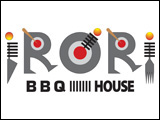Anyone who tells you that they know where commodity prices will be six months from now is either being misleading or fails to have a firm grip on reality. We are in a time where contradictory pressures on supply and demand are combined with political upheavals. As a result, farmers can expect an extended period of volatility in the prices they receive for of the food they produce, and the cost of inputs needed to deliver that food to consumers’ tables.
How did we get to this uncertain place? We can start with the COVID-19 pandemic. The pandemic has caused disruptions in international shipping. Labour shortages, which were appearing before the pandemic, have become acute. Government policies, like vaccine mandates for international truckers, have exacerbated labour gaps and logistics concerns. Our supply chain has become more brittle. What was an efficient international “just in time” logistics system has become “just in case”, with each link in the value chain having to build in extra shipping time and holding increased inventory. Carrying costs have increased. Uncertainty has increased. This is not going to change anytime soon.
On the positive side, Canadian agricultural value chains have proven to be resilient throughout the pandemic. Production and processing capacity has been bent but has not broken. We continue to deliver on our promise of safe, high-quality food for Canadians and consumers around the world. This is a competitive advantage.
COVID-19 is only one disease influencing international supply and demand. African Swine Fever (ASF) has devastated pork production in Asia, particularly in China and the Philippines, two countries that are leading destinations for Canadian pork. This has helped support pork prices in Canada. But how long is this going to last? What is the status of Chinese pork production today? Europe has also been hit by ASF outbreaks. What impact will this have on their production and export volumes? How far will ASF spread? These questions are difficult if not impossible to answer. ASF has caused, and will continue to cause, significant market uncertainty and volatility.
There was widespread drought throughout the Great Plains of North America in 2021. For livestock producers, this has meant feed has been hard to find. Many operations that have traditionally been self-sufficient have faced the decision of either buying feed or exiting the industry. Producers’ margins have been squeezed by ballooning feed costs. Prior to the fall of 2021, most people would have laughed at the suggestion that feed wheat would be over $10 per bushel, but here we are. Will North American crop production levels recover in 2022? How will reduced supply from the Black Sea impact feed prices? Again, we are uncertain.
Which brings us to the third major contributor to market uncertainty – war. Over the past 20 years, the Black-Sea region has become a key contributor to international agricultural markets. For example, before the Russian invasion, Ukraine accounted for 16 percent of world corn exports and 12 percent of world wheat exports. Curtailment of these supplies has already sent the soaring price of feed grains higher. What happens if supplies from the Black Sea stop all together? What impact will the war in Ukraine have on major European pork producers, like the Netherlands and Spain, that rely on the region for feed?
Further, the region is also a critical supplier of fertilizer. Ongoing disruptions in key crop inputs will have an impact on world crop production. The degree to which changes in input supply will impact crop producers, and how long this impact will be felt, is unknown. Also unknown is the impact on world supplies of, and cost of, soybean meal, corn, and feed wheat.
How should agriculture respond to uncertainty and volatility? Risk management tools become far more important when market uncertainty drives increased volatility. Manitoba’s hog farmers run modern business operations. They use risk management tools such as forward contracting for their pigs and hedging feed. However, we can do more to mitigate the growing risks that are beyond the control of producers. First, governments need to reform the current suite of business risk management programs so that they meet the risks farmers are facing today. The pork industry is not alone in calling for changes to AgriStability or access to affordable livestock insurance programs. Second, industry and governments should be looking for ways to improve market and price transparency to allow for better risk assessments. This can, and should, be a collaborative effort that includes all parts of the value-chain.
Manitoba Pork has just held our 57th Annual General Meeting. With all the uncertainty facing producers one might have expected pessimism to be the predominant emotion at the event, but that was not the case. Farmers are optimistic that our pork will continue to see rising demand in global markets. Most are looking for ways in which to grow the sector here in Manitoba, both in production and processing. This attitude goes a long way in explaining the resiliency that the value chain has shown through the COVID-19 pandemic, and it is a predictor of how we will face uncertain days ahead.



